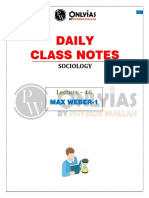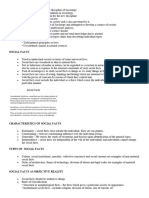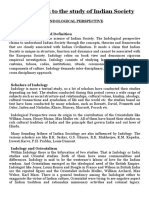0% found this document useful (0 votes)
587 views8 pagesMarxist Analysis of Indian Society
The document discusses Marxist perspectives on Indian society. It outlines different Marxist thinkers and their analyses of caste, class, and historical stages of Indian society. Key points discussed include Dange's view of Brahmins as an economic class, Kosambi's analysis of caste origins, and Desai's theory of India's pre-colonial, colonial, and post-colonial stages through a Marxist lens.
Uploaded by
MayurCopyright
© © All Rights Reserved
We take content rights seriously. If you suspect this is your content, claim it here.
Available Formats
Download as PDF, TXT or read online on Scribd
0% found this document useful (0 votes)
587 views8 pagesMarxist Analysis of Indian Society
The document discusses Marxist perspectives on Indian society. It outlines different Marxist thinkers and their analyses of caste, class, and historical stages of Indian society. Key points discussed include Dange's view of Brahmins as an economic class, Kosambi's analysis of caste origins, and Desai's theory of India's pre-colonial, colonial, and post-colonial stages through a Marxist lens.
Uploaded by
MayurCopyright
© © All Rights Reserved
We take content rights seriously. If you suspect this is your content, claim it here.
Available Formats
Download as PDF, TXT or read online on Scribd
/ 8



























































